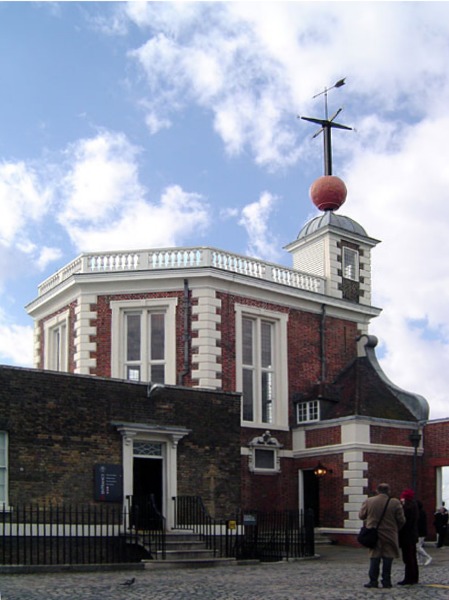Chapter 43: 436-439
Page 436
Mr. Chew
One of the Commissioners appointed by Lord Baltimore to settle the boundary dispute between Maryland and Pennsylvania. Also appears on page 327.
Note the varied meanings of "chew": taffy, chaw (tobacco), masticate ("crushing"), ponder (chew over).
Maskelyne
English astronomer who was appointed Astronomer Royal in 1765; he was also an ordained minister; his sister Margaret married Baron Robert Clive of Plassey (aka "Clive of India") in 1753. Biography of Maskelyne; History of Mathematicians
Maskelyne and Mason, as you recall, were on St. Helena together (see Chapter 13: 125-145).
H.M. Astronomer
H.M. -- His (or Her, though in this case, his) Majesty's
At the very moment he was elevated, I lay flat upon a Back that for all I knew was broken, in a desert place in New Jersey
"i.e. after his fall from his horse at 408.18." -- Pynchon-L: Dinn's Notes
Page 437
slither'd
On page 135, Maskelyne, speaking to Mason on St. Helena: "Serpent, Worm, or Dragon, 'tis all the same to It, for It speaketh no tongue but it own. It Rules this Island, whose ancient Curse and secret Name, is Disobedience."
Note too, in the same paragraph on page 437, that that Mason calls Maskelyne "windy" -- again, a reference to St. Helena?
this seventh Wrangler
At Cambridge University, a wrangler is a student who placed in the first class of the mathematical tripos (18th c.). So, Maskelyne only obtained the 7th highest marks in his year. A senior wrangler is one who attains the highest marks in his year.
Mr. Harrison, and his Chronometer
English horologist who invented a timekeeper (chronometer) capable of compensating for errors due to variations of climate, thus solving the problem of determining longitude at sea and finally claiming the huge prize offered by the government.
the order of Aberration, nor Nutation
Aberration:
- "The first successful parallax measurements of a star other than our sun were made in the early 19th century. The effort to do so had been going on since at least Galileo's day. Bradley was using a zenith sector back in 1729 to measure parallax. He at first thought he had succeeded, but when he noticed that all the stars he checked had the identical parallax, he was suspicious, and concluded that it was something else, to wit, aberration." -- Pynchon-L: Dinn's Notes
- "3. (astronomy) A small periodical change of position in the stars and other heavenly bodies, due to the combined effect of the motion of light and the motion of the observer; called annual aberration, when the observer's motion is that of the earth in its orbit, and daily or diurnal aberration, when of the earth on its axis; amounting when greatest, in the former case, to 20.4"", and in the latter, to 0.3"". Planetary aberration is that due to the motion of light and the motion of the planet relative to the earth." -- Wiktionary
Nutation: "an oscillation of the axis of a spinning body. Now usu spec a variation in the inclination of an axis from the vertical,esp that which makes the precession of the Earth's poles follow a wavy rather than a circular path." Pynchon-L: Dinn's Notes
Octagon Room
 "The Octagan [sic] Room in the Royal Observatory Greenwich was designed by Christopher Wren. A high ceiling was placed on top of this room so that Thomas Tompion's pendulum clocks could fit in. The building was finally finished in the 1670s" (Port Cities London). See The Royal Observatory Greenwich for lots of fabulous details.
"The Octagan [sic] Room in the Royal Observatory Greenwich was designed by Christopher Wren. A high ceiling was placed on top of this room so that Thomas Tompion's pendulum clocks could fit in. The building was finally finished in the 1670s" (Port Cities London). See The Royal Observatory Greenwich for lots of fabulous details.
Christopher Wren was, of course, an interesting fellow: "Sir Christopher Wren, (20 October 1632 – 25 February 1723) was a 17th century English designer, astronomer, geometer, and the greatest English architect of his time. Wren designed 53 London churches, including St Paul's Cathedral, as well as many secular buildings of note. He was a founder of the Royal Society (president 1680–82), and his scientific work was highly regarded by Sir Isaac Newton and Blaise Pascal." -- Wikipedia
Note that a couple of deadly devices are described in similar ("Octagon") terms: the Octuple Gloucester (big cheese on page 137) and "The octagonal Barrel" of the rifle that M&D consider swapping for a Tub on p. 428.
Let him fear to stay up for stars that culminate too late
culminate: "The attainment of the highest point of altitude reached by a heavenly body; passage across the meridian; transit." -- Wiktionary
Note that there are three astronomical terms used on this page; perhaps a stretch, but consider these possible puns, all reflecting on Mason's thoughts regarding Maskelyne's appointment:
- Aberration -- Mason considers Maskelyne's appointment an aberration?
- Nutation -- "The action of nodding the head, esp. as a sign of drowsiness" (OED); Maskelyne is a drowsy {slow-witted} nut?
- "culminate too late" -- Does Mason consider himself a star who will eventually culminate via an appointment to H.M. Astronomer; hence, Masekelyn will fear "staying up too late" upon his post since Mason is clearly the man for the job?
Sizar
"A sizar was one of a body of students in the universities of Cambridge and Dublin, who, having passed a certain examination, were exempted from paying college fees and charges. A sizar corresponded to a servitor at Oxford. The sizar paid nothing for food and tuition, and very little for lodging. They were probably so called from being thus employed in distributing the size, or provisions." -- Wikipedia